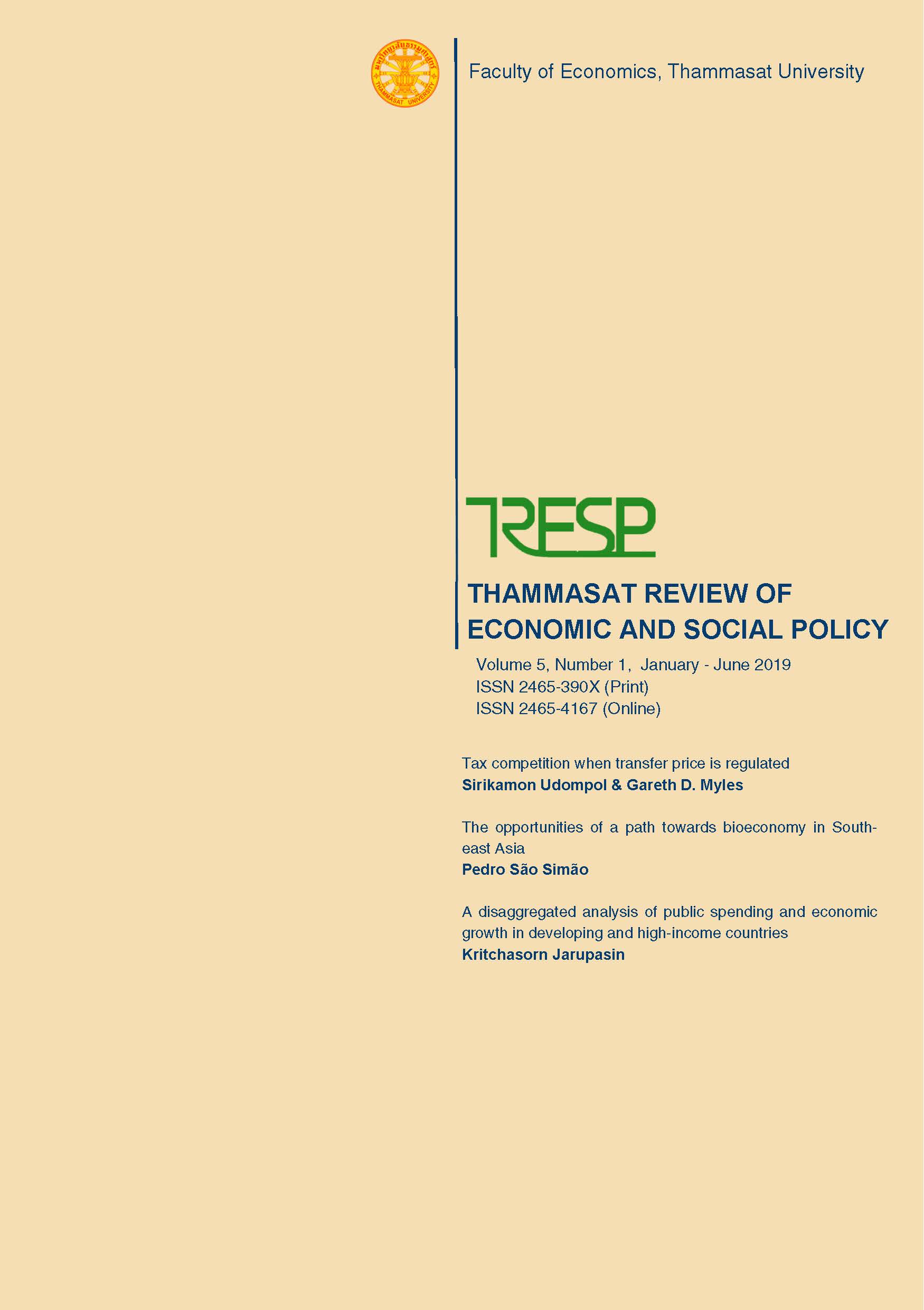The opportunities of a path towards bioeconomy in Southeast Asia
DOI:
https://doi.org/10.14456/tresp.2019.2Keywords:
Bioeconomy, Sustainable growth strategyAbstract
A Bioeconomy can be defined as an economy where biotechnology plays a decisive role in the growth path of a country or region. This paper analyses the specific characteristics associated with a Bioeconomy, exploring the potential it might have in the Southeast Asia region, taking into account its particular endogenous resources and its social and economic characteristics. The paper discusses both potentials of biotechnology in different sectors of the economy as well as provides perspectives for the future. Analysing different natural, economic and social features of the countries in the Southeast Asia region, this paper discusses how these characteristics are suitable for a growth path based on Bioeconomy and how this strategy might be a solution for the continuation of the growth path that the region started years ago, in a way that guarantees sustainability and address the different challenges that this particular region faces currently, and will face in the future.
References
Barrows, G., Sexton, S., & Zilberman, D. (2014). Agricultural biotechnology: the promise and prospects of genetically modified crops. Journal of Economic Perspectives, 28(1), 99–120.
BioTechCorp. (2015). Bioeconomy Transformation Programme: Enriching the Nation, Securing the Future. Annual Report 2014. Ministry of Science, Technology and Innovation of Malaysia. Malaysia.
Carus, M., & Dammer, L. (2013). Food or non-food: Which agricultural feedstocks are best for industrial uses? Industrial Biotechnology, 9(4), 171–176.
European Chemical Industry Council (2014). The European Chemical Industry: Facts and Figures.
Food and Agriculture Organization (2013). FAO Statistical Yearbook 2013: World Food and Agriculture.
Food and Agriculture Organization (2018). Assessing the contribution of bioeconomy to countries’ economy: a brief review of national frameworks. Rome: Food and Agriculture Organization of the United Nations.
Golden, J. S., & Handfield, R. B. (2014). Opportunities in the emerging bioeconomy. Available from US Department of Agriculture, Office of Procurement and Property Management Washington DC.
Indonesia’s forest fires: Burning questions. (2015, November 7). The Economist. Retrieved from https://www.economist.com/news/international/21677629-el-ni-o-leaves-much-south-east-asia-choking-smogburning-questions
KPMG (2014). Emerging Chemical Markets: What’s Next?, KPMG Global Chemicals Institute.
Kumar, S., Salam, P. A., Shrestha, P., & Ackom, E. K. (2013). An assessment of Thailand’s biofuel development. Sustainability, 5(4), 1577–1597.
McCormick, K., & Kautto, N. (2013). The bioeconomy in Europe: An overview. Sustainability, 5(6), 2589–2608.
Organisation for Economic Co-operation and Development (2009). The Bioeconomy to 2030: Designing a Policy Agenda. OECD Publishing. https://doi.org/10.1787/9789264056886-en
Organisation for Economic Co-operation and Development (2011). Future Prospects for Industrial Biotechnology. OECD Publishing.
Organisation for Economic Co-operation and Development (2014). Towards Green Growth in Southeast Asia. OECD Publishing.
PlasticsEurope (2014). Plastics – the Facts 2014/2015: An Analysis of European Plastics Production, Demand and Waste Data.
Sillanpaa, M. & Ncibi, C. (2017). A Sustainable Bioeconomy: The Green Industrial Revolution. Springer.



